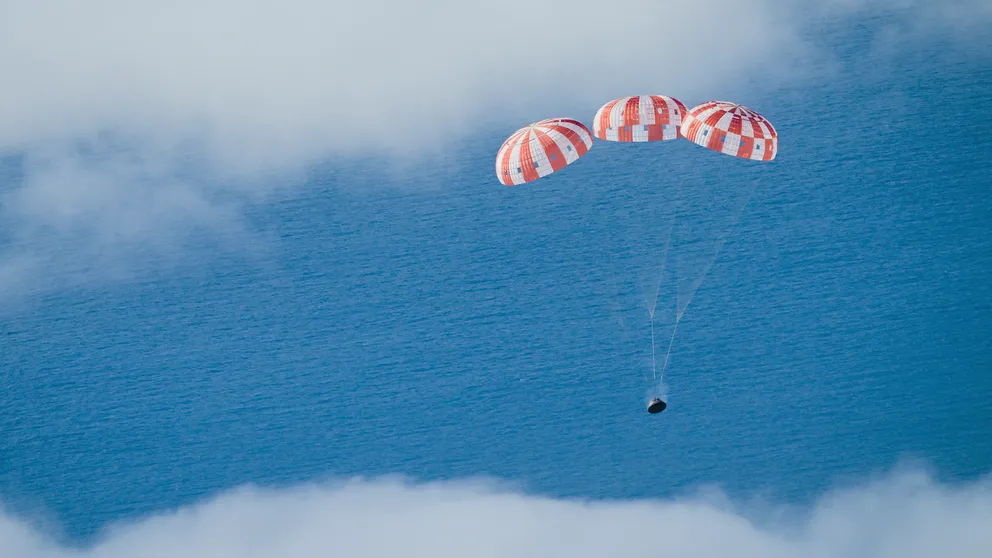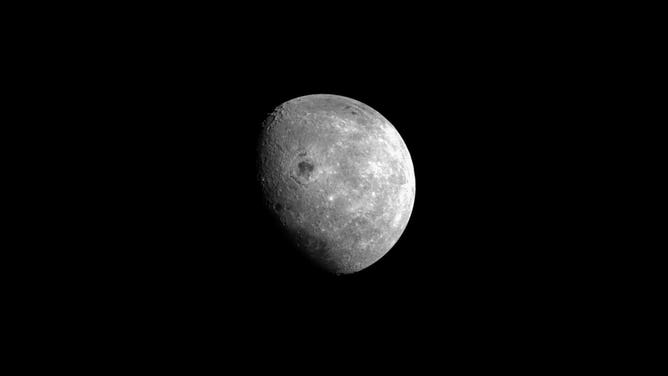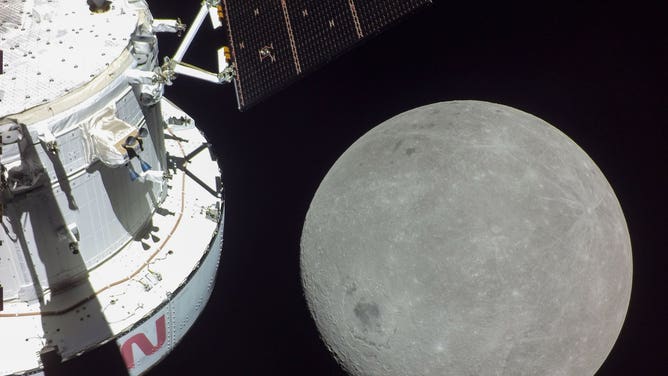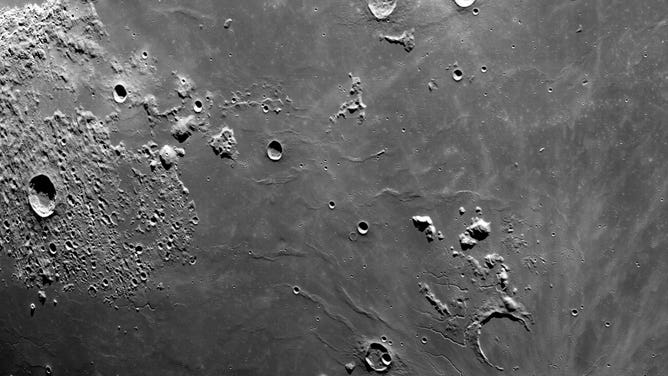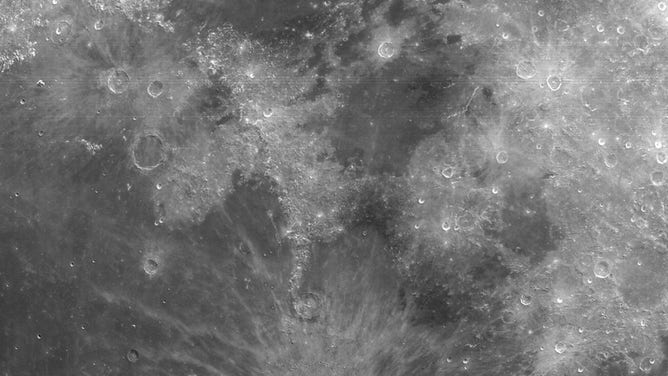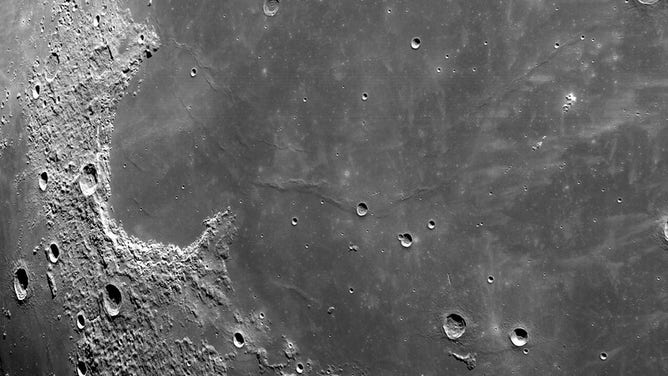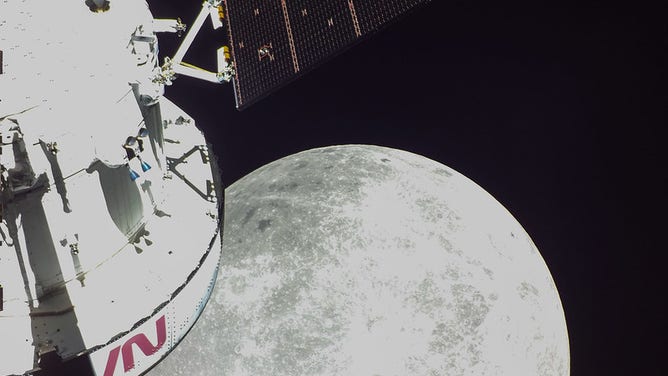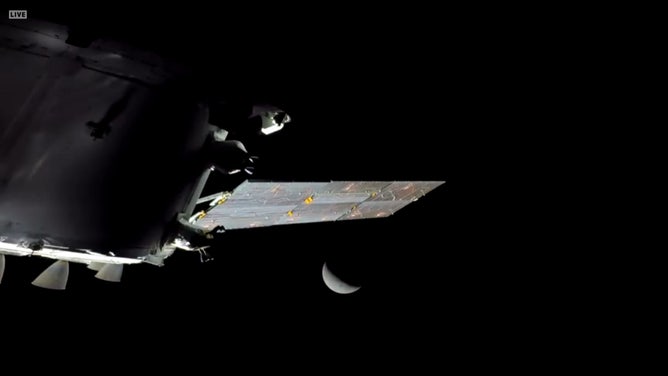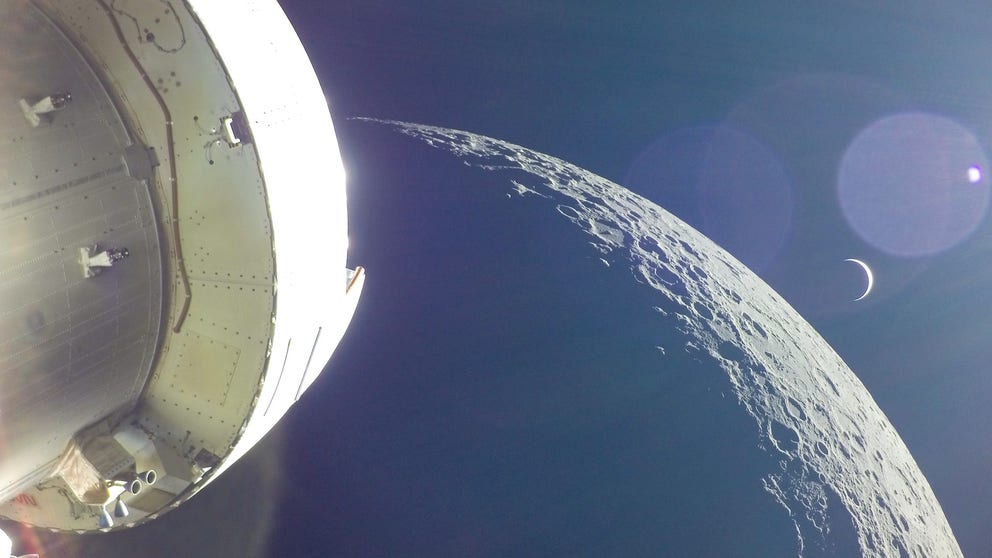Artemis I mission highlights: From mega moon rocket launch to Orion splashdown
Catch up on the major Artemis 1 mission milestones, from the historic launch of the Space Launch System rocket to the splashdown of NASA's Orion spacecraft in the Pacific Ocean. Next up: NASA begins to prepare for Artemis II, launching two astronauts around the moon and back.
Artemis 1 mission: Relive Orion's historic journey to the moon and back to pave way for future astronaut missions
On December 11, the successful splashdown of the Orion spacecraft in the Pacific Ocean marked the end of the Artemis 1 mission.
Orion's triumphant return to Earth begins NASA's next chapter in the Artemis program to return astronauts to the moon in the next few years.
The Artemis 1 test flight was a flurry of firsts for new hardware, new operations and new milestones for NASA, its commercial contractors and the European Space Agency. It marked the first time since the space shuttle program that NASA put a new rocket and spacecraft into space, testing its abilities to the limit.
You could say the historic first launch of the Space Launch System (SLS) rocket from Kennedy Space Center on Nov. 16 was the beginning of Artemis 1, but the journey goes back more than a decade to when the mega moon rocket was still in development and testing.
Boeing delivered the rocket's bright orange 212-foot core stage. Aerojet Rocketdyne rocket engines provided SLS the thrust to leave Earth and then navigate Orion throughout its journey to the moon and back.
The European service module built by Airbus Defense and Space acted as the backbone of the spacecraft, containing the power and propulsion needed for Orion to reach its deep space destination. Right before Orion barreled back into Earth's atmosphere, the service module separated, completing its mission.
"The European Service Module has done its job," said NASA commentator Rob Navias after separation.
The Orion spacecraft, built by Lockheed Martin, underwent rigorous testing before being stacked on top of the SLS inside the Vehicle Assembly Building at Kennedy Space Center this spring.
Every testing milestone and hardware delivery to Kennedy Space Center put NASA closer to launching the Artemis 1 test flight.
Hurricanes, pesky hydrogen leaks and – finally – a nighttime liftoff
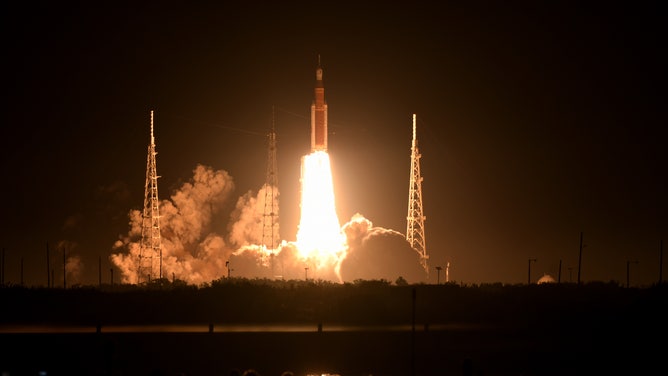
NASA's Space Launch System (SLS) rocket with the Orion spacecraft launches from pad 39B at the Kennedy Space Center for the Artemis 1 mission on November 16, 2022 in Cape Canaveral, Florida. This is the third attempt to launch the Artemis I rocket to the moon after a series of technical and weather delays. (Photo by Paul Hennessy/Anadolu Agency via Getty Images)
(Getty Images)
Beginning this summer, the SLS and Orion made the first of several trips to the Kennedy Space Center launchpad 39B from the Vehicle Assembly Building before ultimately launching.
Two launch attempts in August and September ended in launch scrubs due to technical issues with fueling the rocket with super-cold liquid hydrogen, which commonly leaks. Weather delayed the most recent attempts in late September and early November when back-to-back hurricanes Ian and Nicole made landfall on Florida's coasts.
Finally, on Nov. 16, all the engineering and weather difficulties were resolved and allowed for an overnight liftoff of NASA's moon rocket.
"That launch campaign was not easy. There were a lot of setbacks. But the collective team really relentlessly pursued getting that launch off and the entire Space Coast was lit up," Kennedy Space Center Director Janet Petro recalled.
HISTORY MADE: NASA'S MOON ROCKET ROARS TO LIFE LAUNCHING ON ARTEMIS 1 TEST FLIGHT
After several delays during the countdown, including a heroic repair at the pad by a special crew known as the Red Team, the SLS rocket roared to life, rumbling away from KSC with 8.8 million pounds of thrust.
At 1:47 a.m. Eastern, the RS-25 rocket engines created a growl so powerful it could be felt throughout Florida, and the light illuminated the Space Coast.
"We are all part of something incredibly special – the first launch of Artemis, the first step in returning our country to the moon and onto Mars," Artemis 1 Launch Director Charlie Blackwell-Thompson told the launch team after liftoff. "What you've done will inspire the next generation."
Thus began the nearly 26-day test flight for the Orion spacecraft to the moon and back.
Hello moon
More than 230,000 miles from home, quickly closing the gap to the moon, cameras on Orion's solar arrays or the spacecraft's "selfie sticks" captured the pockmarked lunar surface in the distance.
As Orion began its closest approach to the moon on Nov. 21, NASA shared live views of the moon and Earth as seen from the spacecraft.
Artemis 1 Mission Manager Mike Sarafin said later NASA did not expect to be able to share live views from Orion as it approached the moon. After the initial success, NASA began livestreaming the view from Orion whenever possible.
"There is much more to come," Sarafin said.
Zooming around the moon's far side, Orion traveled 81 miles from the surface, marking the first of two close flybys during the mission.
On Nov. 26, the Artemis 1 mission surpassed the Apollo 13 mission distance record when the spacecraft reached 248,655 miles from Earth.
According to NASA, at its farthest from home, Orion traveled 268,553 miles from Earth, more than 43,000 miles from the moon. The milestone happened 12 days and 14 hours into the Artemis 1 mission.
A final moon flyby and beautiful Earthrise
Watch Orion's breathtaking final journey around the moon before heading back to Earth
After Orion completed its final lunar flyby, the spacecraft fired up its engines to set it on course for its return journey back to Earth.
Orion made its final close approach to the moon on Dec. 5, traveling around 4,800 mph as it swept by the far side of the lunar surface. After Orion completed its final flyby, the spacecraft cameras captured Earth rising on the horizon as it swung around the moon.
Orion completed a series of engine burns to return to Earth. The first happened on Dec. 1, with a 45-second distant retrograde orbit (DRO) departure burn, setting the spacecraft up to begin its flight home.
Next, the spacecraft completed a successful return-powered flyby (RPF) burn, putting Orion on the correct trajectory to splash down in the Pacific Ocean on Dec. 11.
A moment of truth
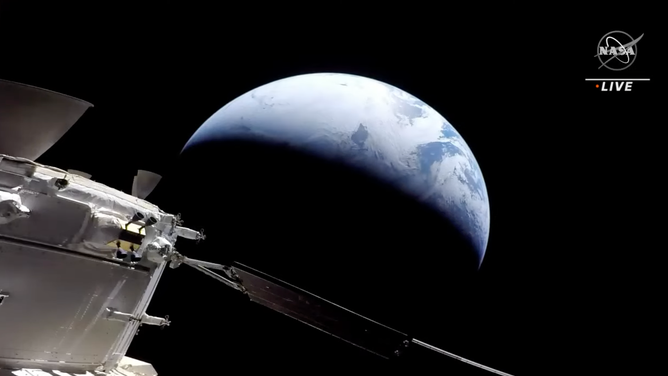
Orion's view of Earth grows larger as the spacecraft returns on Dec. 11, 2022. (Image: NASA)
(NASA)
Orion's "moment of truth" happened on Dec. 11 when the spacecraft came plunging through Earth's atmosphere at 25,000 mph.
Orion's survival for this hellish reentry depended on the heat shield, which underwent 1,000 tests for 15 years, according to NASA, to ensure it was ready for the job of absorbing the 5,000-degree blazing temperatures to transfer heat away from the crew capsule.
"Orion will come blazing through Earth’s atmosphere at temperatures twice as hot as molten lava," said Jeremy Vander Kam, deputy system manager for the Orion spacecraft’s thermal protection system. "But everything points to a thermal protection system that’s going to work great, and a successful homecoming will help confirm the heat shield is ready to protect astronauts returning to Earth."
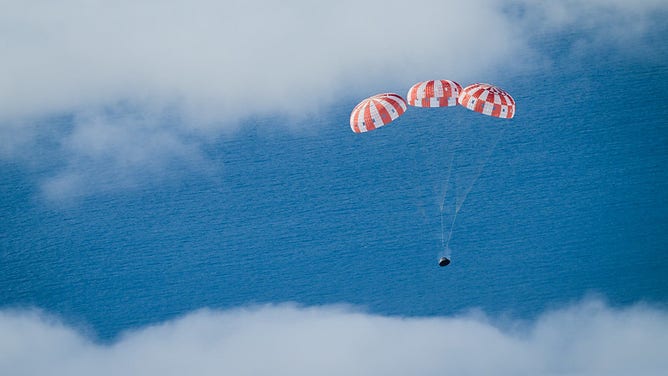
At 12:40 p.m. EST, Dec. 11, 2022, NASA’s Orion spacecraft for the Artemis I mission splashed down in the Pacific Ocean after a 25.5-day mission to the Moon. Orion will be recovered by NASA’s Landing and Recovery team, U.S. Navy and Department of Defense partners aboard the USS Portland. (Image: NASA)
(NASA)
A key objective in the Artemis 1 test flight was proving whether the spacecraft heat shield could protect future astronauts returning home from the moon. A team from NASA's Ames Research Center in California will get a piece of the heat shield to analyze how a material called Avocat withstood the extreme conditions. Sensors embedded in the material will also provide data to the team.
After the initial brake from hitting Earth's atmosphere, a series of parachutes were used to slow Orion down from 300 mph to a gentle splash in the Pacific Ocean. The first smaller drogue parachutes and then three mains glided Orion down for a soft drop into the water.
The successful splashdown at 12:40 p.m. EST off the coast of Mexico marked the end of Orion's 25.5-day spaceflight and 1.4 million-mile journey.
Orion was collected by NASA and U.S. Navy teams and brought onboard the USS Portland. The spacecraft will be brought back to the U.S. Navy Port in San Diego before returning to Kennedy Space Center.
Next up: Data review and astronaut launch
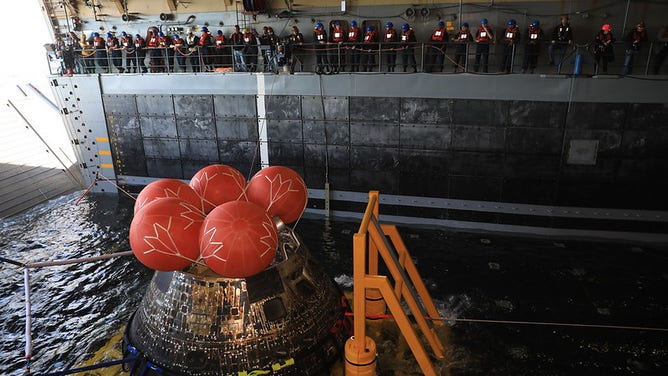
NASA’s Orion spacecraft for the Artemis I mission was successfully recovered inside the well deck of the USS Portland on Dec. 11, 2022 off the coast of Baja California. After launching atop the Space Launch System rocket on Nov. 16, 2022 from the agency’s Kennedy Space Center in Florida, Orion spent 25.5 days in space before returning to Earth, completing the Artemis I mission. (Image: NASA)
(NASA)
The first successful Orion splashdown sets up NASA for a series of milestones that need to happen before the space agency launches two astronauts on the same journey around the moon sometime in 2024.
In the next few months, Artemis program teams will be busy learning as much as they can from the Artemis 1 test flight using data downloaded from the spacecraft, more data from sensors and physically examining the hardware for signs of wear from the spaceflight.
NASA’S ORION SPLASHES DOWN AFTER HISTORIC MOON MISSION, PAVING WAY FOR FUTURE ASTRONAUT MISSIONS
More data from inside the spacecraft will tell engineers how safe Orion is for astronauts.
Three manikins named Campos, Helga and Zohar, were inside Orion as it traveled around the moon, each outfitted with sensors to help determine what human astronauts will experience when they launch and land in Orion. Zohar was wearing a vest designed to reduce exposure to radiation. Another experiment using the manikins measured the amount of radiation astronauts may experience inside Orion.
NASA has yet to announce the crew who will fly on Artemis II but plans to do so in early 2023.
